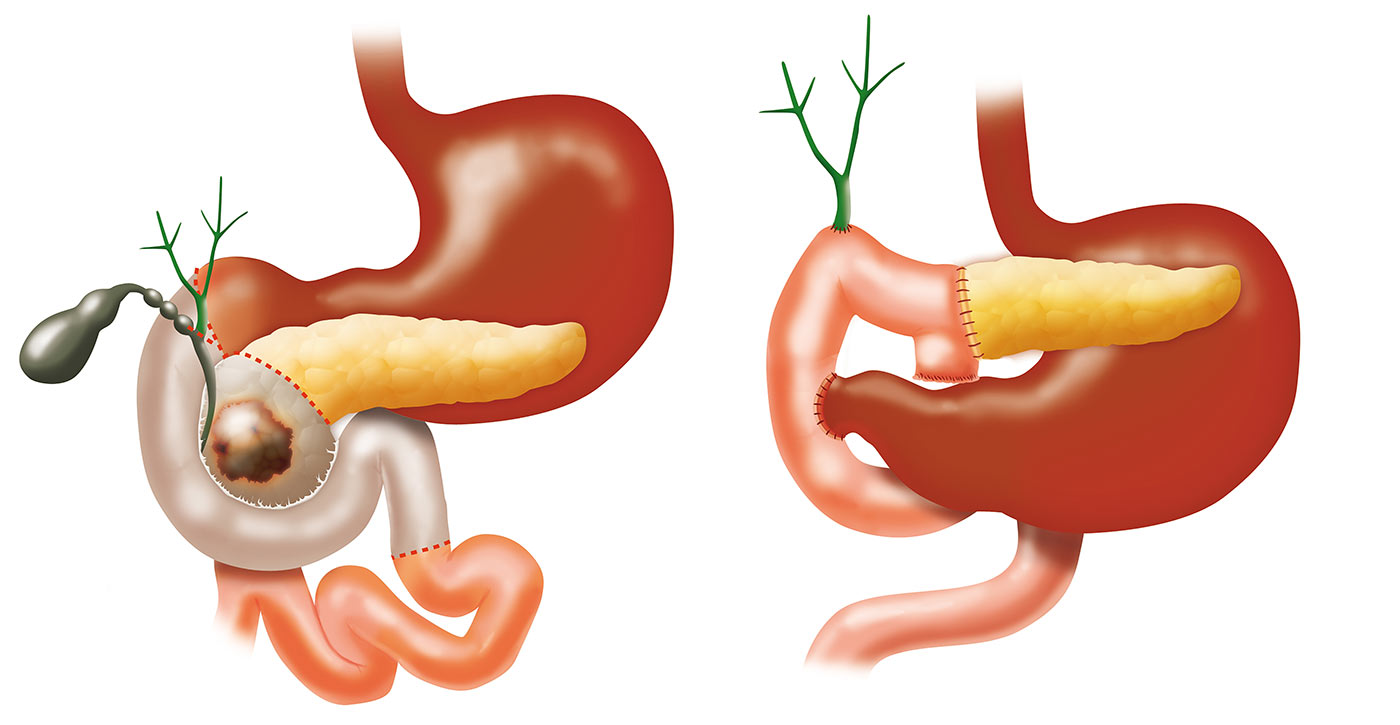
A Whipple procedure, or Kausch-Whipple procedure, is a major surgical operation involving the pancreas, duodenum, and other organs. This operation is performed to treat cancerous tumours on the head of the pancreas, malignant tumors involving common bile duct, duodenal papilla, duodenum near the pancreas, and/or pancreatitis with or without definitive cause.
This is a very complex procedure that requires great experience and knowledge of the different variations that can normally be present in this area. It entails removal of the head and uncinate process of the pancreas, the duodenum, the major bile duct duct with gall bladder, and removing part of the stomach. A surgeon may be able to preserve the stomach if the tumor is not stuck to the stomach itself (Pyloric preserving Whipple). After the removal of these organs, the surgeon will re-establish continuity of the pancreatic and hepatic ducts with rest of gastrointestinal tract. The stomach or initial part of the duodenum (in Pyloric preserving Whipple) will also be connected to the small bowel. A total of three to four new connections (Anastomoses) will be created. Technical experience in creating these connections, as well as complete removal of the tumor with negative margins will define the success rate of this procedure.
The more the complex a surgical procedure is, the higher the potential risk from surgery is. The risk can be minimized with great surgical experience, newer surgical technologies, intra-operative sophisticated anesthesia measures, advanced postoperative critical care, and excellent nursing and ancillary staff care. These are all present in GBMC and Jordan Hospital.
The great advancement of GBMC, allowed them to perform the first complete Laparoscopic Whipple in 2011, done by Dr. Ahmad Bashir. Since, many laparoscopic Whipple procedures have been performed. It is now considered the standard. Results have been great with lower than surgical literature complication rate.

